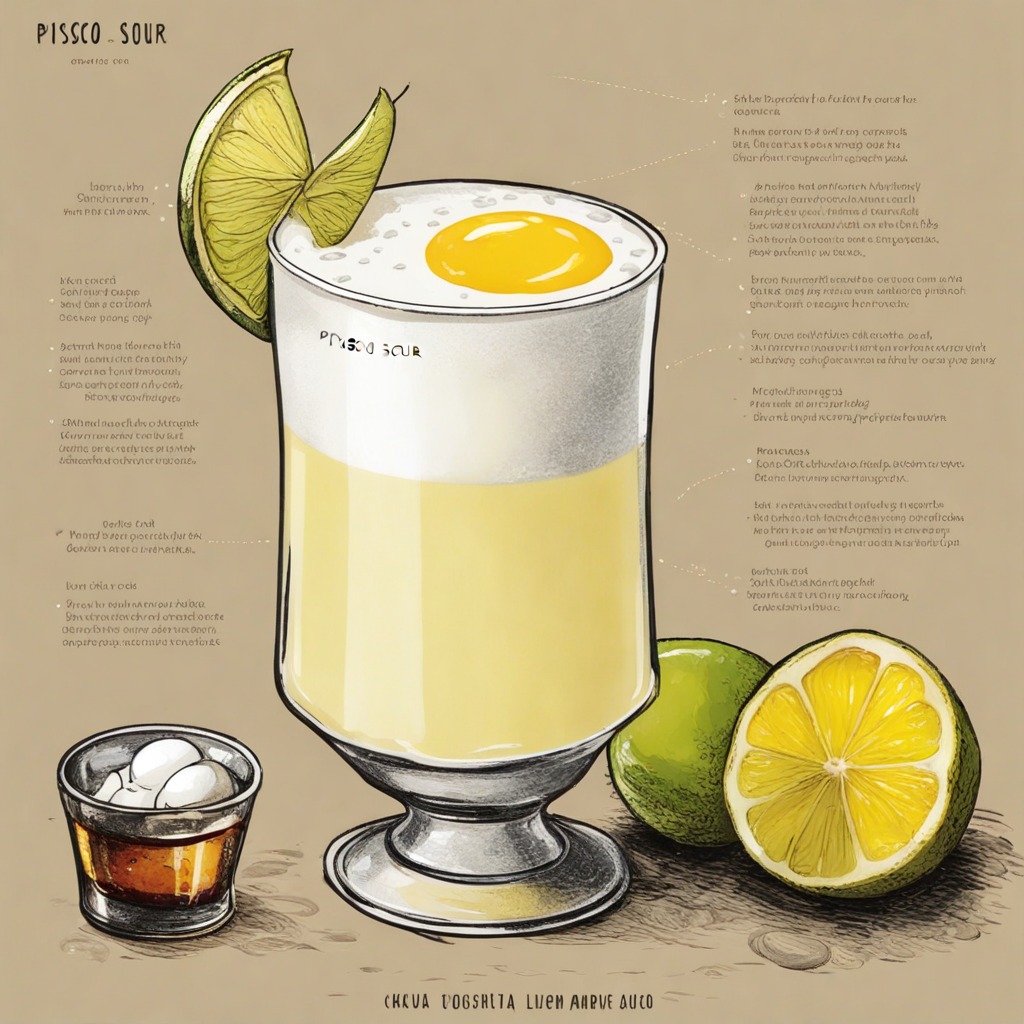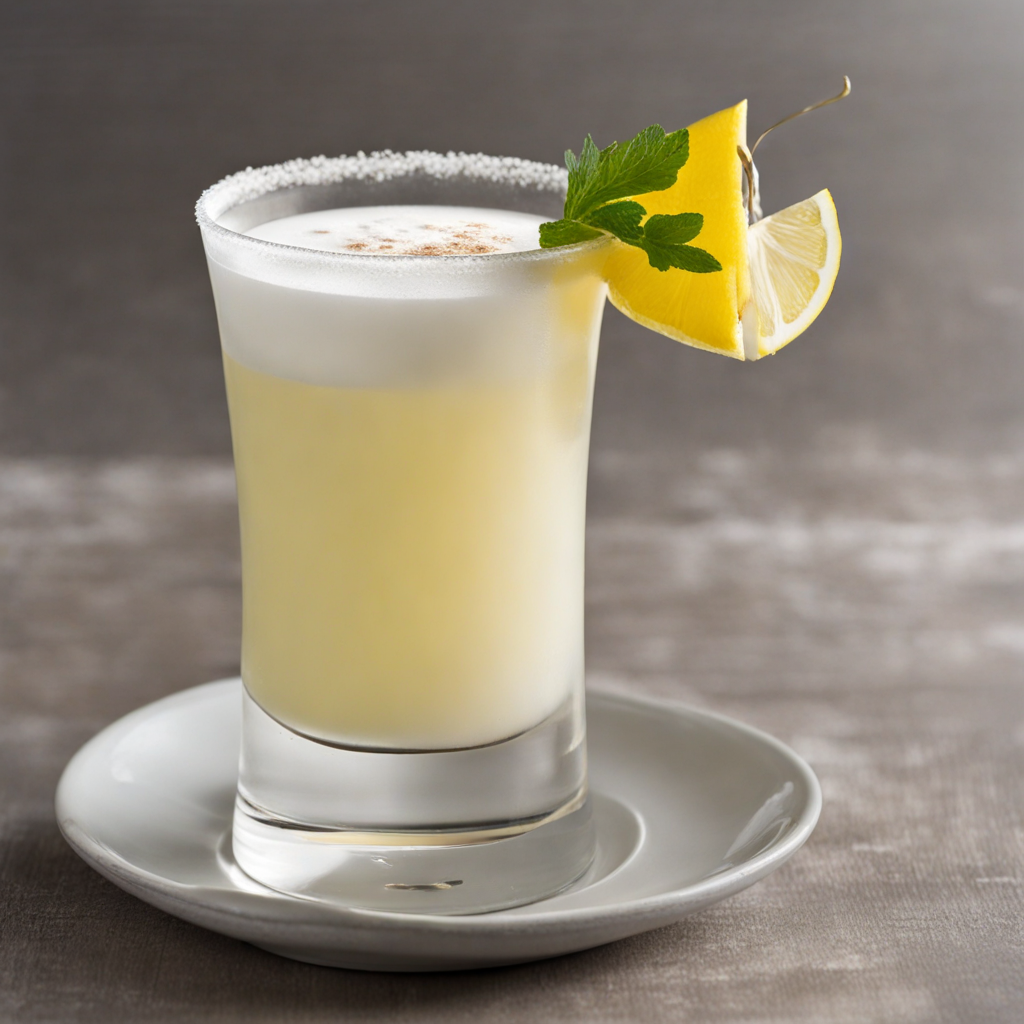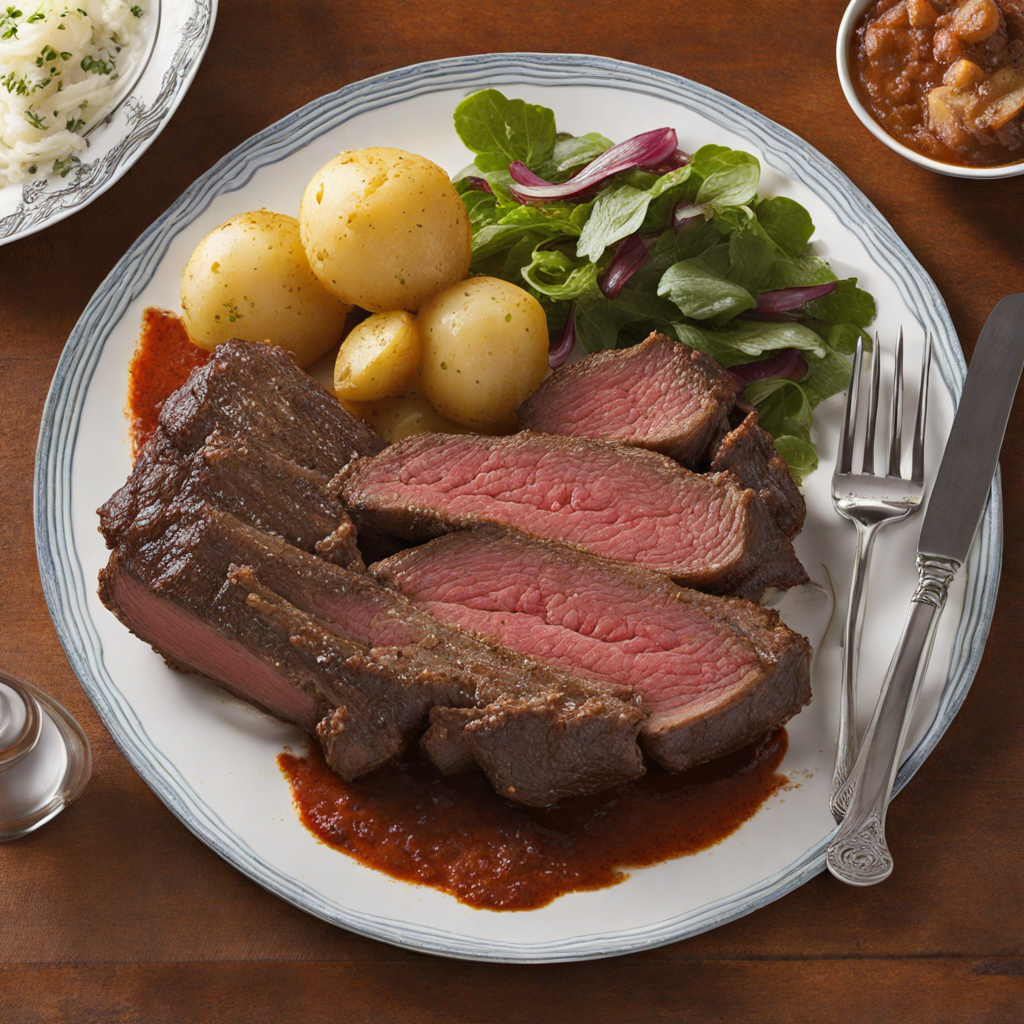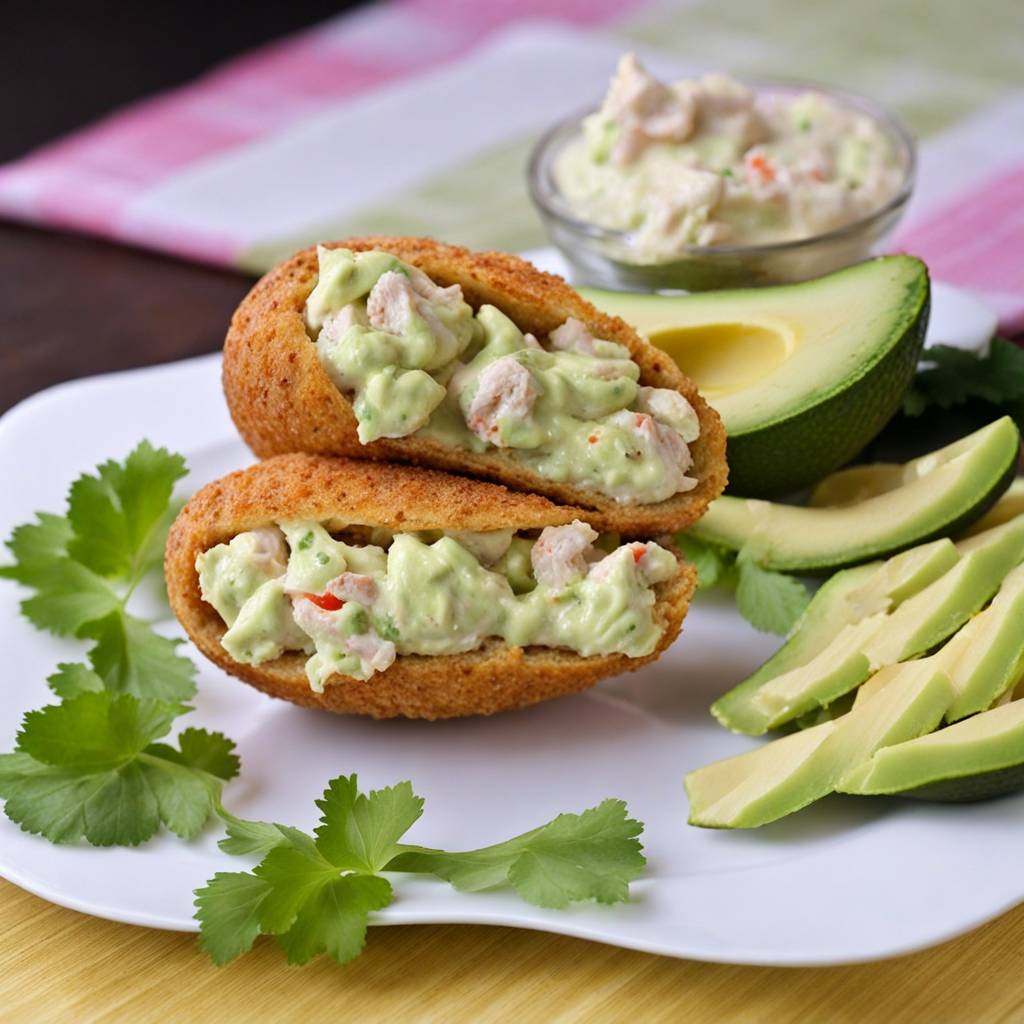Pisco Sour
Pisco Sour is a delightful cocktail that hails from the vibrant culture of Chile, showcasing a harmonious blend of flavors that tantalize the taste buds. At its core, this cocktail highlights Pisco, a high-proof grape brandy that embodies the essence of Chilean terroir. The Pisco is meticulously crafted from select grape varieties, imparting a unique fruity aroma and complex flavor profile that ranges from floral to herbal notes. The addition of fresh lime juice injects a refreshing tartness that beautifully balances the spirit's sweetness, creating a symphony of taste that is both invigorating and satisfying. To elevate the experience, Pisco Sour incorporates a touch of simple syrup, which sweetens the drink without overpowering its natural essence. A frothy layer of egg white is whipped into the mix, adding a luxurious texture and a creamy mouthfeel that envelops the palate. This velvety foam not only enhances the visual appeal of the cocktail but also mellows the acidity of the lime, resulting in a smooth and well-rounded drink that beckons for a sip. The final touch is a dash of Angostura bitters, often garnished on top, providing an aromatic finish that adds depth and complexity to the overall flavor profile. Whether enjoyed as a refreshing aperitif before a meal or as a celebratory drink during special occasions, Pisco Sour is a quintessential representation of Chilean cuisine. Its invigorating taste, combined with the artistry of its presentation, makes it a must-try for anyone looking to explore the rich flavors of Chile. With each sip, one can savor the craftsmanship of this cocktail, experiencing the passion and tradition that goes into every glass, making Pisco Sour a true gem of Chilean gastronomy.
How It Became This Dish
The Pisco Sour: A Cultural and Culinary Legacy The Pisco Sour, a delightful cocktail known for its refreshing taste and frothy texture, has become a symbol of national pride for both Chile and Peru. This beloved drink is not just a beverage; it is a story of cultural exchange, regional rivalry, and the evolution of culinary traditions. To understand the significance of the Pisco Sour, we must delve into its origins, its cultural importance, and its development over time. #### Origins of Pisco and the Pisco Sour The roots of Pisco can be traced back to the 16th century when Spanish settlers brought grapevines to South America, particularly to what is now Chile and Peru. The arid valleys of these regions provided the ideal climate for grape cultivation. By the late 1500s, local winemakers began producing a distilled spirit from fermented grape juice, which they named "Pisco," derived from the Quechua word "pisqu," meaning bird, and the name of a coastal town in Peru. The Pisco Sour, as we know it today, emerged in the early 20th century. While the exact origin of the cocktail is debated, it is widely accepted that the drink was first crafted in Peru. Victor Morris, an American bartender who settled in Lima, is often credited with creating the Pisco Sour at his bar, "Morris Bar," around 1916. Morris's original recipe included Pisco, lime juice, sugar, ice, and an egg white, which contributed to the cocktail's signature frothy top. Chile, however, also claims its own version of the Pisco Sour, leading to a friendly rivalry between the two nations. Chilean Pisco Sour recipes often incorporate different proportions and ingredients, such as the inclusion of bitters or the use of a sweeter grape distillate. This rivalry is emblematic of the broader cultural tensions and historical disputes over the origins of Pisco itself. #### The Cultural Significance The Pisco Sour is more than just a cocktail; it is a cultural artifact that reflects the identity of both Chile and Peru. In Peru, the drink is celebrated as a national cocktail and is integral to the country’s culinary culture. The first Saturday of February is designated as "National Pisco Sour Day," during which Peruvians partake in festivities that honor this iconic drink. The Pisco Sour is often enjoyed during celebrations, family gatherings, and festivals, symbolizing hospitality and community. In Chile, the Pisco Sour holds a similar place in the national consciousness. Chileans take pride in their own version of the cocktail, often enjoying it as an aperitif before meals. The drink is a staple in Chilean bars and restaurants, and it is not uncommon for locals to engage in lively debates about the proper recipe and preparation methods. The Pisco Sour, in both countries, transcends its role as a beverage; it serves as a reminder of shared history, regional pride, and cultural identity. #### Evolution Over Time As the Pisco Sour gained popularity, its recipe evolved to accommodate changing tastes and preferences. In the mid-20th century, the cocktail began to appear in bars around the world, often adapted to suit local ingredients and palates. Mixologists started experimenting with variations, introducing fruits like passion fruit, berries, and even herbs into the mix. These adaptations led to a proliferation of Pisco Sour variations, each reflecting the creativity of the bartender and the unique local flavor profile. In addition to variations in ingredients, the method of preparation also saw changes. The traditional shaking method with an egg white was sometimes replaced with modern techniques such as blending. This shift made the cocktail easier to prepare in larger quantities, especially in busy bars and restaurants. The frothiness, however, remained a defining characteristic of the Pisco Sour, a testament to the importance of presentation in cocktail culture. #### Pisco Sour in the Global Context The rise of the Pisco Sour on the international stage can be attributed to the growing interest in craft cocktails and the resurgence of classic drinks. As travelers explored Latin America, they discovered the Pisco Sour and brought its unique flavor back to their home countries. Bartenders across the globe began incorporating Pisco into their cocktail menus, helping to elevate the drink's profile and introducing it to new audiences. The global trend towards sustainability and local sourcing also played a role in the Pisco Sour's popularity. As consumers became more conscious of the origins of their food and drink, the story behind Pisco—its artisanal production methods and the rich tradition of grape-growing in the valleys of Chile and Peru—resonated with many. This narrative added depth to the cocktail, transforming it from a simple drink into a symbol of cultural heritage and craftsmanship. #### The Ongoing Debate Despite the Pisco Sour's globalization, the debate over its origins continues to spark passion and pride in both Chile and Peru. Each country has its own regulations regarding Pisco production, with Peru recognizing only specific grape varieties and production methods to be labeled as Peruvian Pisco. Chile, on the other hand, produces a wider range of Pisco styles, each with its own distinct characteristics. This ongoing discussion is not merely about a drink; it reflects deeper themes of national identity, pride, and cultural heritage. #### Conclusion The Pisco Sour is a cocktail that embodies the rich tapestry of history, culture, and tradition that defines both Chile and Peru. Its origins in the 16th century, the creative genius behind its modern form, and its significance as a national drink reflect the complexities of cultural exchange and regional pride. Today, the Pisco Sour is not only a staple in bars around the world but also a symbol of the enduring legacy of South American craftsmanship and hospitality. As we raise a glass of Pisco Sour, we celebrate not only its vibrant flavors but also the stories and traditions that have shaped this iconic cocktail. Whether enjoyed in a bustling bar in Lima or at a family gathering in Santiago, the Pisco Sour continues to be a testament to the cultural richness of its homeland and the shared history of two nations united by their love for this exquisite drink.
You may like
Discover local flavors from Chile







